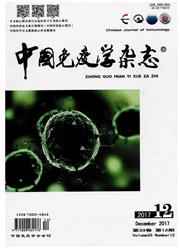

 中文摘要:
中文摘要:
目的:探讨胶质细胞感染流感病毒后的天然免疫反应,检测流感病毒H1N1和H5N1体外感染小鼠小胶质细胞和星形胶质细胞,是否会诱导胶质细胞趋化因子转录水平的变化及其规律。方法:从新生小鼠大脑皮质分离培养神经胶质细胞,并进一步纯化小胶质细胞和星形胶质细胞,经纯度鉴定后,用感染复数为2的流感病毒H1N1和H5N1进行体外感染,8小时后用免疫荧光检测流感病毒核蛋白(NP)的表达,以确认感染细胞比例。在感染早期(6小时)和感染中期(24小时)分别提取细胞RNA,检测趋化因子转录水平的变化。结果:分离得到小鼠的小胶质细胞和星形胶质细胞,病毒感染后超过95%的细胞可以被感染,感染后的小胶质细胞与星形胶质细胞的CCL-3、CCL-5、CXCL-2、CXCL-9和CXCL-10的转录水平发生不同程度的上调,其中CXCL-10的上调幅度最为明显,禽流感病毒H5N1感染能诱导更强烈的上调反应。结论:流感病毒H1N1和H5N1感染小鼠小胶质细胞与星形胶质细胞,可诱导趋化因子转录水平上调。
 英文摘要:
英文摘要:
Objective: To investigate the innate immune response of influenza virus-infected ghal cells, the transcription levels in chemokines in mouse microglia and astrocytes were detected which pre-infected by human H1N1 or avian H5N1 influenza viruses. Methods: The glial cells isolated from neonatal mice cerebral cortex were cultured and further microglia and astrocytes were purified. The primary mouse microglia and astrocytes were infected in vitro by H1N1 or H5N1 influenza viruses in a multiplicity of infection (MOI) 2. Eight hours post infection, the influenza virus nucleoprotein (NP) was detected by immunofluoreseence to identify the proportion of infected cells. The cellular RNA were extracted at 6 h and 24 h to detect the transcriptional level of chemokines by semi-quantitative RT-PCR. Results: More than 95% of the microglia and astrocytes which isolated from mice were infected. The transcription levels of CCL-3, CCL-5, CXCL-2, CXCL-9 and CXCL-10 from infected microglia and astrocytes were upregulated. Futhermore, the mRNA level of CXCL-10 increased much more. In addition, avian H5N1 influenza virus could induce more stronger upregulation of those chemokines than human H1N1 did. Conclusion: The mouse microglia and astrocytes which are infected by H1N1 influenza virus or H5N1 influenza virus could induce upregulation of transcription level of chemokines.
 同期刊论文项目
同期刊论文项目
 同项目期刊论文
同项目期刊论文
 The distinct binding properties between avian/human influenza A virus NS1 and Postsynapticdensity pr
The distinct binding properties between avian/human influenza A virus NS1 and Postsynapticdensity pr Asymmetric Production of Nitric Oxide in Mouse Primary Cortical Mixed Glial Cell Cultures Treated Wi
Asymmetric Production of Nitric Oxide in Mouse Primary Cortical Mixed Glial Cell Cultures Treated Wi A Drug Screening Method Based on the Autophagy Pathway and Studies of the Mechanism of Evodiamine ag
A Drug Screening Method Based on the Autophagy Pathway and Studies of the Mechanism of Evodiamine ag Apoptosis and proinflammatory cytokine responses of primary mouse microglia and astrocytes induced b
Apoptosis and proinflammatory cytokine responses of primary mouse microglia and astrocytes induced b The Correlation Between Cytokine Production. by Cerebral Cortical Glial Cells and Brain. Lateralizat
The Correlation Between Cytokine Production. by Cerebral Cortical Glial Cells and Brain. Lateralizat Asymmetrical release of interleukin-6 by cultured cerebral cortical astrocytes treated with lipopoly
Asymmetrical release of interleukin-6 by cultured cerebral cortical astrocytes treated with lipopoly Differential suppressive effect of promyelocytic leukemia protein on the replication of different su
Differential suppressive effect of promyelocytic leukemia protein on the replication of different su 期刊信息
期刊信息
